I’m fascinated by what you write because I can relate to it. Viewing abstract work used to alienate me, but slowly you have changed my response. When I paint I often feel overwhelmed by all the decisions that need to be made. It often leads me to “run away” because the task feels too difficult. I’ve been wanting to free myself from this and turning to abstraction certainly helped me gain momentary courage. For each painting (not abstract) I choose to do, I burn inside with an incredible intensity to give expression to a visual equivalent of my inner experience. I also burn with a desire to communicate in a visual language that feels more accessible to me and my viewer. These two needs mostly end up chocking me and my productivity is very low and very slow.
Why I’m writing, is because I wanted to ask a question, if I may. What do you think about while you are working on a specific piece? (I don’t really know how to phrase that question).
response: I have much to offer on the subject of Abstract art-making and I am happy to offer to you what you would wish to receive.
I think that first you have to decide if it is really a path you wish to explore. I think that you have trepidation and that you sense uncertainty and fear that it could take you to places that you preferred not to visit, so to speak. One the one hand you feel very closed-in by the path of realism, that it is preventing you from connecting with the needs of your soul to find satisfaction in art-making. On the other hand….You are not sure of what you are frightened of, yet you sense that there is truly something to fear.
If I can help you it is from my own experience.
When I began as an adult to pursue a “career” of art, I knew that I needed to acquire a strong foundation in the basics: drawing from life, afterwards, painting from life, in the Classical tradition; studying the Master’s works, trying to learn the rules, etc. This was several years of labor.

The peak of my learning was when I spent a year in NYC at the New York Studio School. There I became immersed more in the atmosphere of Modern Art, and began to move from seeing myself as a little student to trying to artworks to a mature artist who “speaks what he has to say”. Thus, although I was still painting from life, my colors began more expressive of my emotions and I also gave myself license to let the forms mingle with one another, not being tied so literally to what I saw, but to make associations between objects in order that a picture become something more of a determined composition and not simple a copying of what I see.
This is an example of a drawing, before I went to New York.:
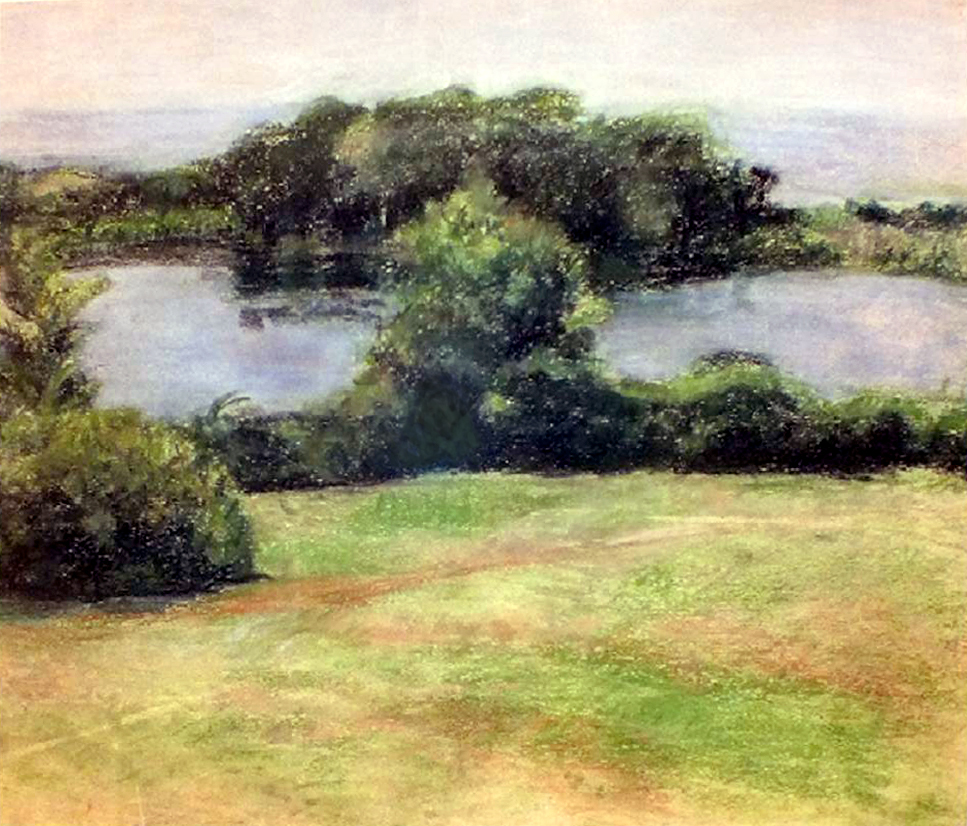
Quite “literal”.
Here is an example, also before I went to NY, a self-portrait. This is in line with the tradition I had been taught, which was to abstract and simplify what is seen into “blocks” of color, representing the major planes of the form. This is already a “Modern” idea:

Also before I went to New York, the same time as the pastel above, a still life:
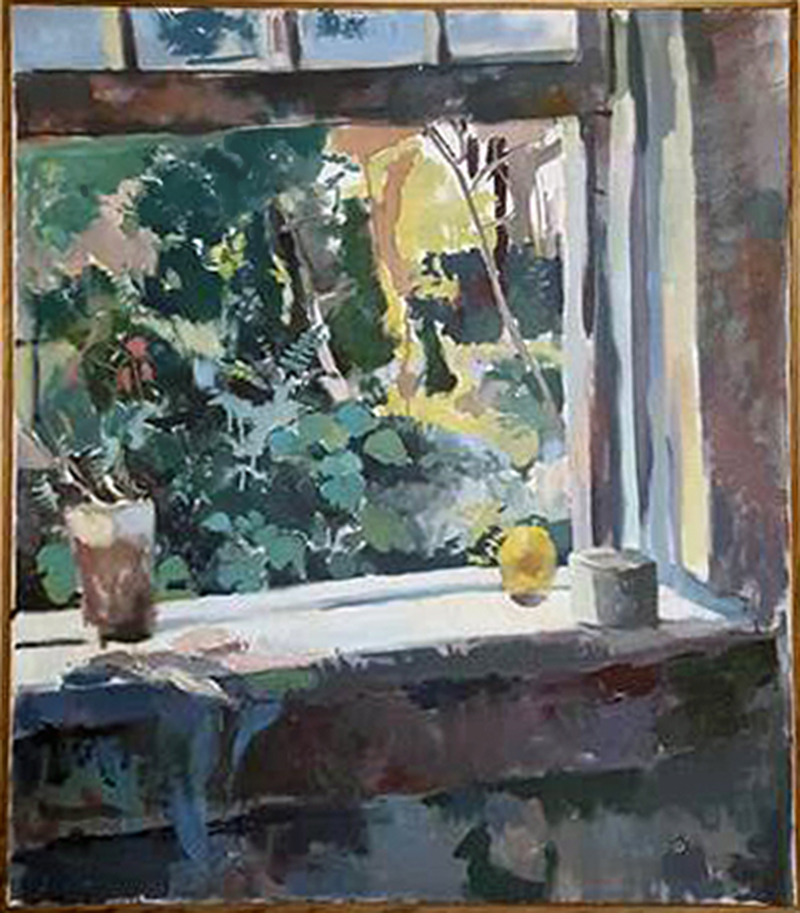
Here in New York, still painting from life, yet becoming more abstract (these images are not examples of my best works from the time, rather these are all that I have today, very few):

Here is a landscape, after New York. Expressive colors, “loose form”, concerned more with the abstract composition, feeling of space, light, “spirit” and not so much with any literal representation:
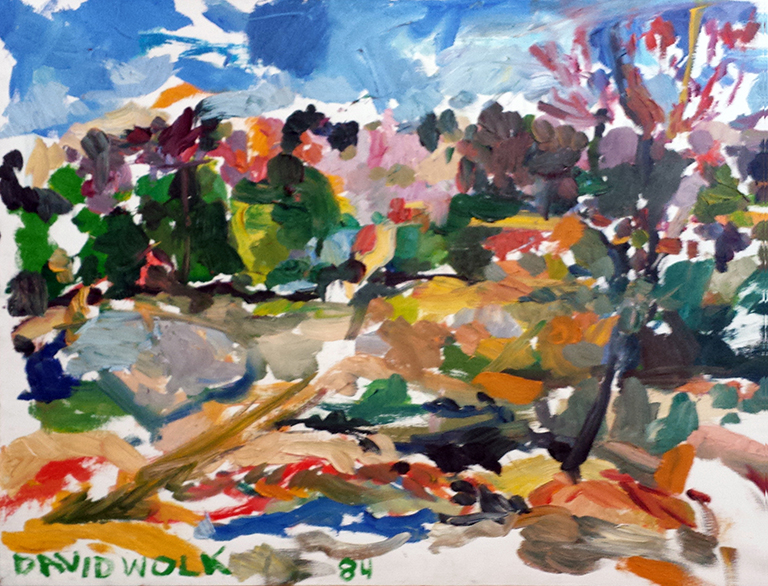
But here is where things became really more difficult; where I made the decision to enter into my own personal inner world altogether and to leave the external references to the outside world for others. I think this might be similar to the bridge at which you are now standing. Because I knew that if I wanted to paint the real truth of what was going on inside of me, this would involve a socio-psychological crisis in my life which I wasn’t sure that I wanted to tackle, or that I had the means to successfully tackle. On the one hand my art was stuck. I could continue to paint pictures that are pleasing to most people, but I myself feeling completely unfulfilled inside, knowing that I had much deeper feelings that I wanted to express, much deeper realities, realms of truth that I wanted to reach. The whole reason I had entered art in the beginning was to search out the truth, and here I was, standing at the bridge that I knew led to where the truth lay, and I was afraid to cross, because I knew also that it would cut me off from the world and make it very hard for me.
In short, I decided to “go inward” towards the goal and began painting completely abstractly. And I was correct about both sides of the coin: I did find the truth I was searching for and I did cut myself off from the world and bring my life into crisis.
It was a very difficult process and I will not even try to explain the kinds of depths that my life entered, but you can imagine something of it I am sure, as every artist goes through these kinds of things, at least to some degree, and I know that you have much familiarity with these kinds of places….
But from those years of true turmoil I eventually came to Emunah and eventually Hashem brought me to Eretz Yisrael and eventually to Yeshiva, etc. etc. In short, only this “jump of faith” allowed me to become free of the prison of the secular world in which I had been raised, and to eventually become a “free man.”
Here are some examples of works before I came to Eretz Yisrael:

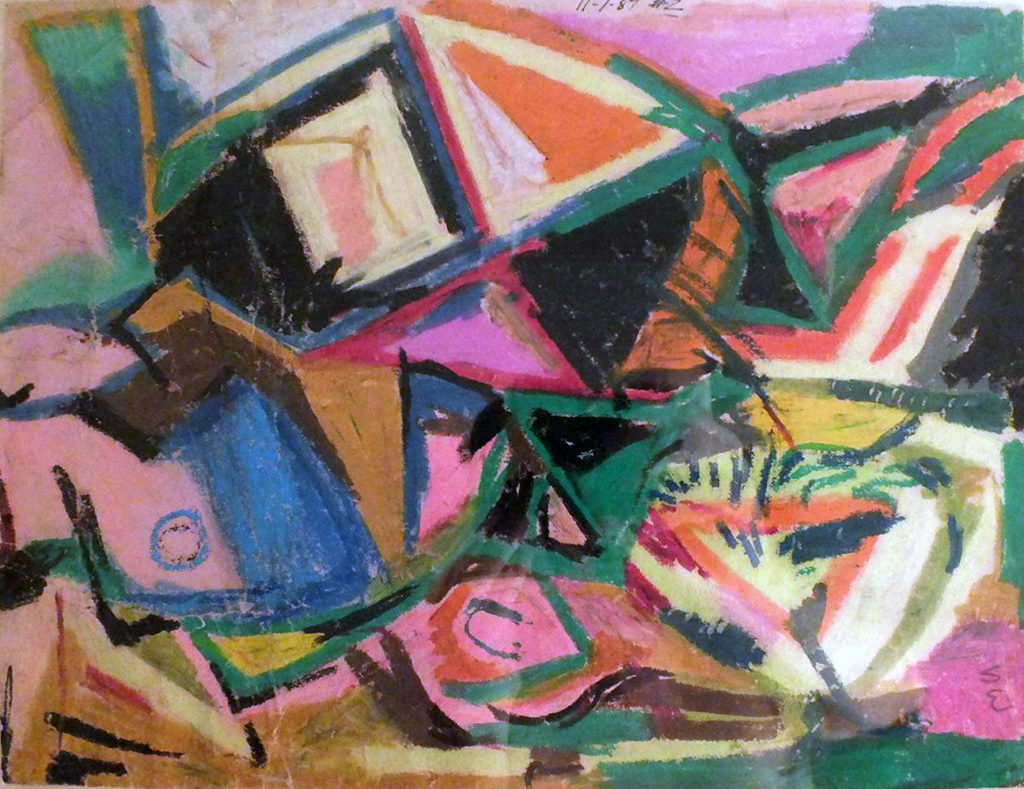


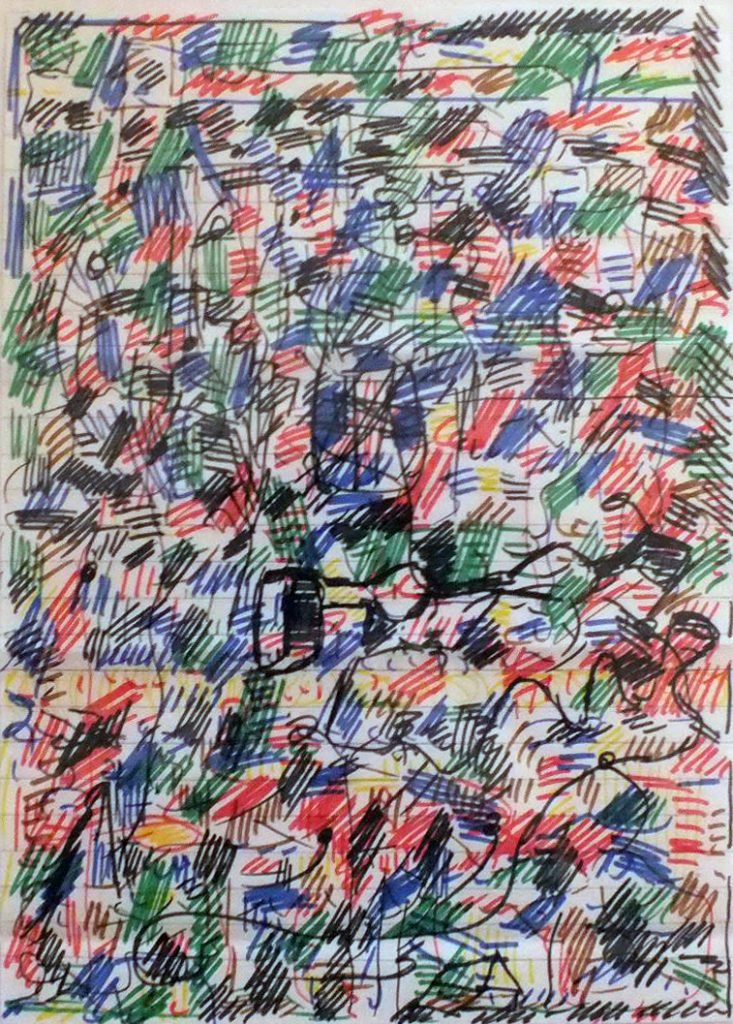
Okay. I’m not here to give a whole history. In short, when I took on the Yoke of Torah and Mitzvoth I stopped painting. I had been one who paints and draws all the time, 10-15 hours a day. My whole life was art-making. Now my life had to become Torah. There was no place for the two together.
After 20 years of not even taking a pencil to draw, Haschgachah brought me back to painting, to paint what I love: Torah, the holy letters. Again I cannot go into the whole subject. I have written much about it and there is much more to write and if you are interested I can show you my writings. In short, I also stopped painting because there was nowhere to go further with it. Painting in itself is ultimately empty, paganism. Self-expression is not enough of a goal. Life is not about self-expression. Painting helped me a great deal to understand myself, my inner processes;but without Torah one hasn’t the faintest idea of how to live correctly. Art without Torah is dangerous. Exploring one’s inner world without a firm connection to Torah is like going into the middle of a great ocean without a boat. Painting is an extremely powerful tool. Without Torah one will certainly go wrong with it.
But with a strong foundation in Torah, slowly I began to see that now I could paint and not lose my way. It is a big subject…
The main thing is that one hold his mind onto holy subjects when he paints. I bring myself to think in Torah when I paint and my whole purpose is to attach myself to Kedushah and that the paintings should be works of Kedushah and that any and everyone who looks and ponders them can only be led by them to Kedushah. That it be impossible to find another path in them, Heaven forbid.
As this new path developed (I have returned to painting now about 12 years) so now specifically my mind is involved with Names of Hashem, in various permutations. It is a very holy practice to picture, to “draw” the Four-letter Name of Hashem in one’s mind and have it before him always (see Shulchan Aruch , Orach Chaim, Siman 1, Seif 1, in the Biur Halacha.)
I am involved in this process. When I paint, when I pray, and also other times. In painting, my mind is focused on holy Names and I “clothe” the ideas in abstract from and colors. I had already learned much and developed my own personal abstract language for expressing my thoughts and emotions in painting before I came to Torah, and now I found this language suitable and very fit for expressing Torah thoughts. All abstract paintings clothe the artist’s thoughts and feelings. So now I seek to produce holy works, where the inner content is pure and the outer form protects and reveals what is inside. Abstraction allows one the freedom to express any and everything, the greatest depths, and if one chains himself to the Torah he is safe and free to travel the depths of his being.
My painting helps my prayer and my prayer helps my painting, for it is one process– of teaching the mind to focus. To focus on the holy, the Names of Hashem. Again this is a huge subject and needs much understanding, but that is basically, in tremendous brevity, what I am involved in, Baruch Hashem.
So after all this I can say to you that you needn’t go through a socio-psychological crisis if you decide to “go inward” and free yourself from tying yourself to the external world in your artwork. You need to find the way to enter your inner world while holding onto Hashem, and let Him take you where you need to go.
I hope this was of help and feel free to ask me more, if I can offer you more.
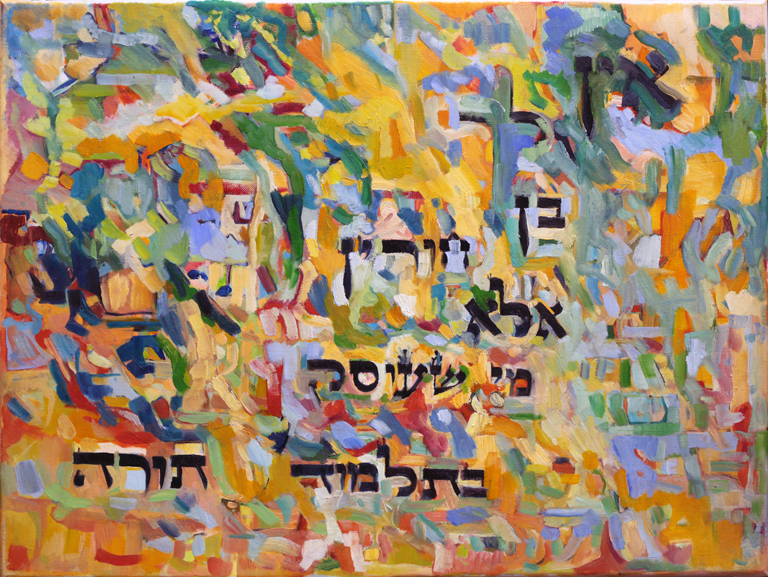
(משנה אבות, ו’; ב’)
You can have no freer man than one who engages in the study of Torah.
(Mishnah Avos)
Oil on canvas
ציור שמן על קנבס
תשס”ח
45 x 60 cm.
